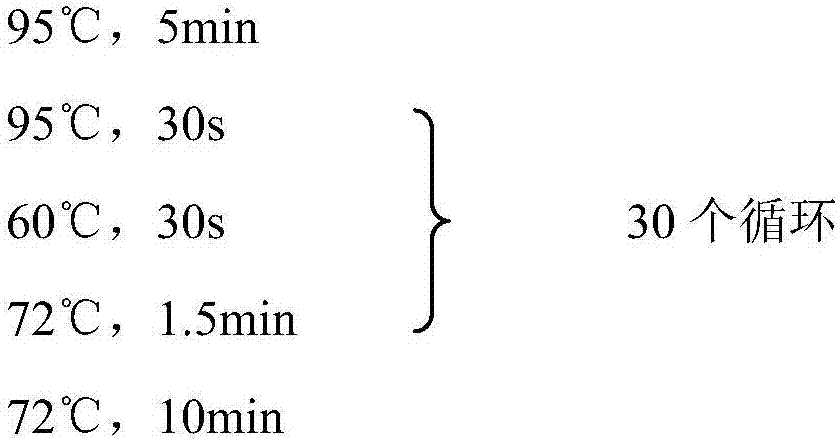Recombinant bacteria capable of synthesizing 3-hydracrylic acid by using glucan as well as construction method and application of recombinant bacteria
A technology of hydroxypropionic acid and recombinant bacteria, applied in the field of genetic engineering, can solve the problems such as limited utilization rate of 3-hydroxypropionic acid substrate and limited yield, and achieve the effect of improving the utilization rate of substrate and improving yield
- Summary
- Abstract
- Description
- Claims
- Application Information
AI Technical Summary
Problems solved by technology
Method used
Image
Examples
Embodiment 1
[0049] Construction of embodiment 1 recombinant strain
[0050] 1) Construction of recombinant vector puC18-lgk
[0051] In this example, codon optimization is performed on the gene lgk (the nucleotide number in NCBI is KU377145.1) derived from the levoglucosanokinase of L. starkeyi; the original gene is imported into the website http: / / www.jcat.de / Start.jsp In the process, the commonly used enzyme cutting sites were eliminated, and the optimized gene sequence was obtained after replacing rare codons. The optimized gene sequence was used as a template to synthesize the gene, and its sequence is shown in SEQ ID NO.1. Using the gene obtained by gene synthesis as a template, the gene fragment was obtained by PCR amplification (primers: 5'-CGGGATCCATGCCGATCGCTACCTCTAC-3' and 5'-GCTCTAGATTAAGCCCAGTTGTTGGTGAT-3'); the specific amplification procedure is as follows:
[0052]
[0053] After the PCR, 1% (wt / v) agarose gel electrophoresis was performed, and the target fragment wi...
Embodiment 2
[0065] Embodiment 2 fermentation produces 3-hydroxypropionic acid
[0066] The engineering strain monoclonal that embodiment 1 obtains is activated in LB culture, and the seed liquid after activation is by seed liquid: the ratio of fermentation medium volume ratio 1:130 is inoculated in the 250mL shake flask that contains the fermentation medium of 100mL ( Contains 100μg·mL -1 Kanamycin), cultured with shaking at 35°C and 180rpm. OD 600 When it reaches about 0.8, add 0.1mMIPTG to induce, and continue to cultivate at 37°C. Thereafter, the pH was adjusted to 7 with ammonia water every 12 hours, and the fermentation was terminated 24 hours after the initial induction.
[0067] Take 1 mL of fermentation broth, centrifuge at 15,000 rpm for 10 min at 4°C, take the supernatant, and detect the product concentration by high-performance liquid chromatography. Using an ultraviolet detector, the 3-HP yield is 0.8 g / L.
Embodiment 3
[0068] Embodiment 3 fermentation produces 3-hydroxypropionic acid
[0069] The engineering strain monoclonal that embodiment 1 obtains is activated in LB culture, and the seed liquid after activation is by seed liquid: the ratio of fermentation medium volume ratio 1:100 is inoculated in the 250mL shake flask that contains the fermentation medium of 100mL ( Contains 100μg·mL -1 Kanamycin), cultured with shaking at 37°C and 180rpm. OD 600 When reaching about 0.6, the temperature was adjusted to 30°C, and 0.01 mM IPTG was added for induction. Thereafter, the pH was adjusted to 7 with ammonia water every 12 hours, and the fermentation was terminated 48 hours after the initial induction.
[0070] Take 1 mL of fermentation broth, centrifuge at 15,000 rpm for 10 min at 4°C, take the supernatant, and detect the product concentration by high-performance liquid chromatography. Using an ultraviolet detector, the 3-HP yield is 1.1 g / L.
PUM
 Login to View More
Login to View More Abstract
Description
Claims
Application Information
 Login to View More
Login to View More - R&D
- Intellectual Property
- Life Sciences
- Materials
- Tech Scout
- Unparalleled Data Quality
- Higher Quality Content
- 60% Fewer Hallucinations
Browse by: Latest US Patents, China's latest patents, Technical Efficacy Thesaurus, Application Domain, Technology Topic, Popular Technical Reports.
© 2025 PatSnap. All rights reserved.Legal|Privacy policy|Modern Slavery Act Transparency Statement|Sitemap|About US| Contact US: help@patsnap.com


